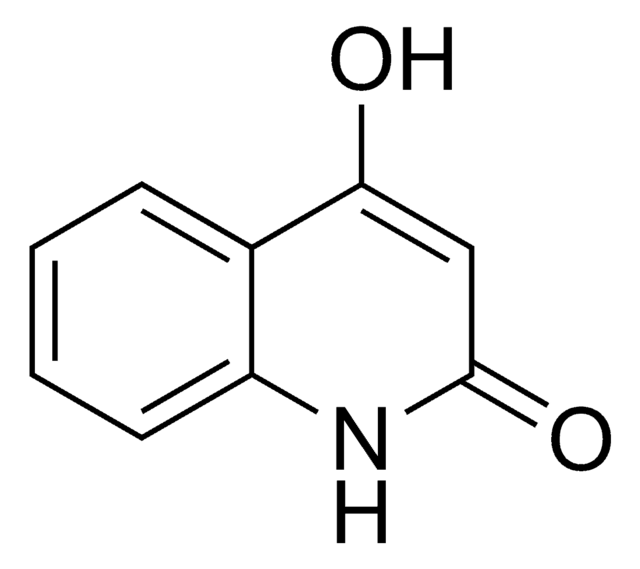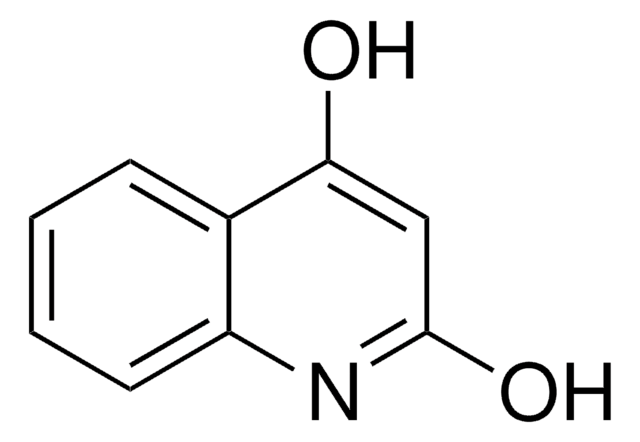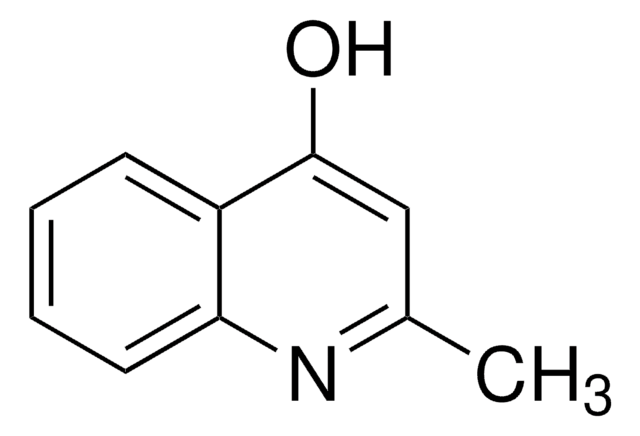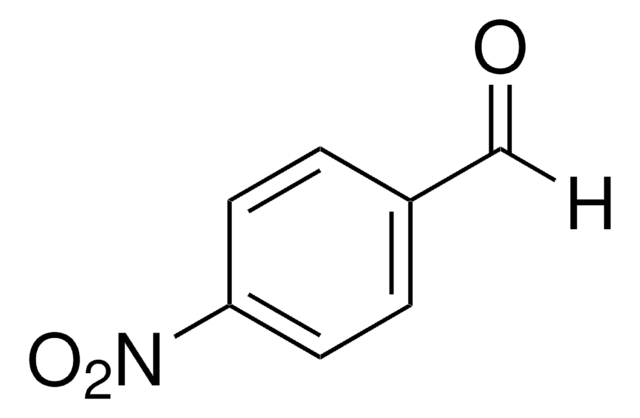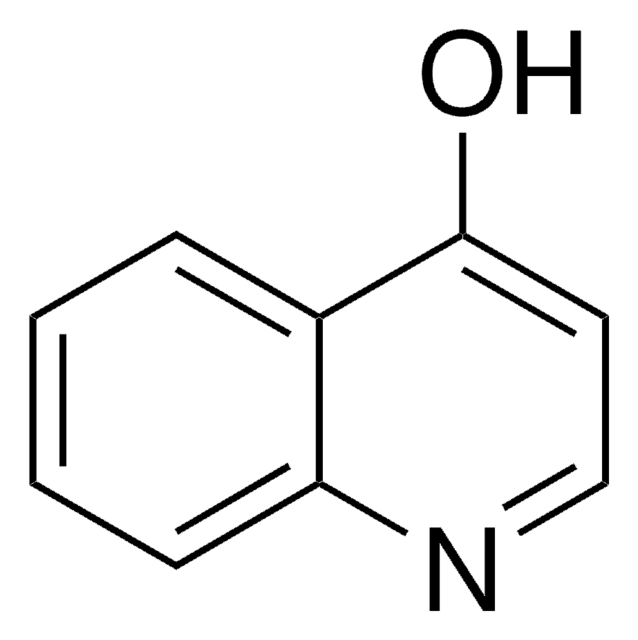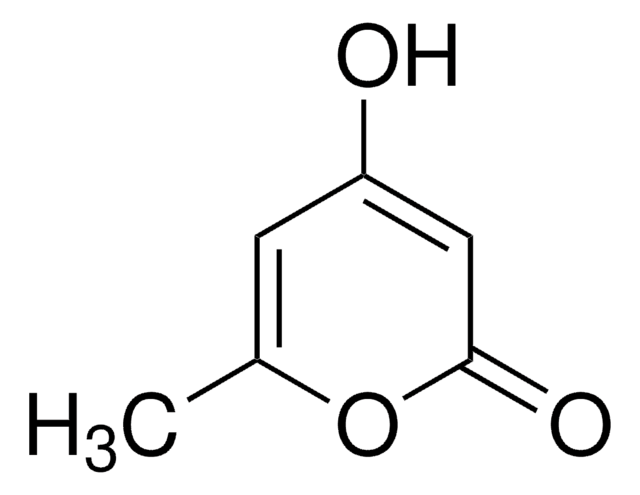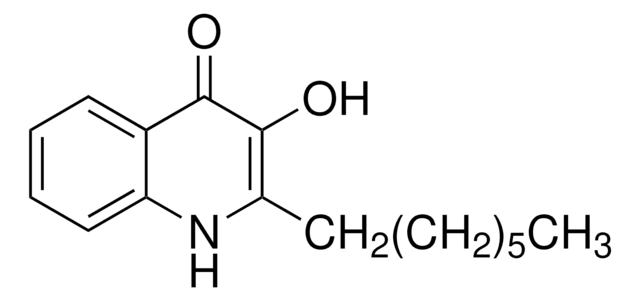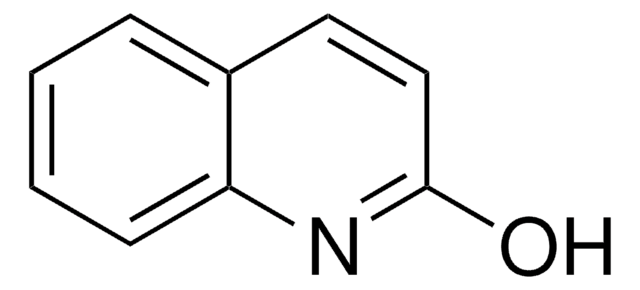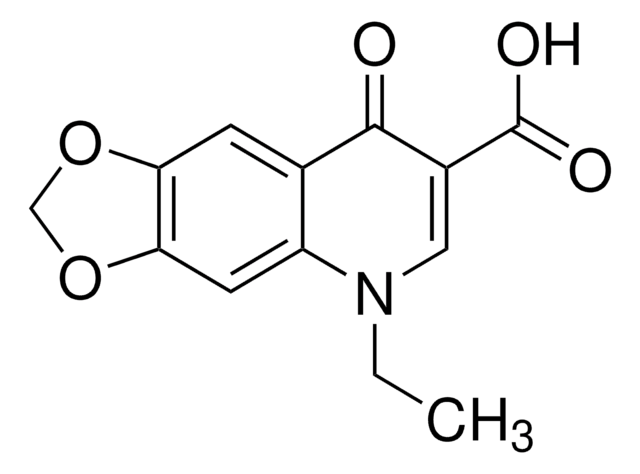168696
4-Hydroxy-1-methyl-2(1H)-quinolone
98%
Se connecterpour consulter vos tarifs contractuels et ceux de votre entreprise/organisme
About This Item
Formule empirique (notation de Hill):
C10H9NO2
Numéro CAS:
Poids moléculaire :
175.18
Numéro CE :
Numéro MDL:
Code UNSPSC :
12352100
ID de substance PubChem :
Nomenclature NACRES :
NA.22
Produits recommandés
Niveau de qualité
Essai
98%
Forme
powder
Pf
269-271 °C (lit.)
Chaîne SMILES
CN1C(=O)C=C(O)c2ccccc12
InChI
1S/C10H9NO2/c1-11-8-5-3-2-4-7(8)9(12)6-10(11)13/h2-6,12H,1H3
Clé InChI
RTNPPPQVXREFKX-UHFFFAOYSA-N
Application
4-Hydroxy-1-methyl-2(1H)-quinolone was used as nucleophile in electrochemical oxidation of catechols and the reaction was studied by cyclic voltammetry and controlled-potential coulometry. It was used in ceric ammonium nitrate-mediated oxidative cycloaddition of 1,3-dicarbonyls to conjugated compounds to yield substituted dihydrofurans, dihydrofurocoumarins, dihydrofuroquinolinones and dihydrofurophenalenones. It was used in the synthesis of :
- 3-(4-methoxybenzyl)-4-hydroxy-1-methylquinolinone
- 3-(benzo[d][1,3]dioxol-5-ylmethyl)-4-hydroxy-1-methylquinolin-2(1H)-one
- 3-(4-chlorobenzyl)-4-hydroxy-1-methylquinolin-2(1H)-one
- 3,3′-bis(4-chlorobenzylidene)-1,10-methylquinolin-2,20-(1H)-one
Mention d'avertissement
Warning
Mentions de danger
Conseils de prudence
Classification des risques
Eye Irrit. 2 - Skin Irrit. 2 - STOT SE 3
Organes cibles
Respiratory system
Code de la classe de stockage
11 - Combustible Solids
Classe de danger pour l'eau (WGK)
WGK 3
Point d'éclair (°F)
Not applicable
Point d'éclair (°C)
Not applicable
Équipement de protection individuelle
dust mask type N95 (US), Eyeshields, Gloves
Faites votre choix parmi les versions les plus récentes :
Déjà en possession de ce produit ?
Retrouvez la documentation relative aux produits que vous avez récemment achetés dans la Bibliothèque de documents.
Les clients ont également consulté
Mechanistic study of electrochemical oxidation of catechols in the presence of 4-hydroxy-1-methyl-2 (1H)-quinolone: Application to the electrochemical synthesis.
Fakhari AR, et al.
Electrochimica Acta, 50(27), 5322-5328 (2005)
Ceric ammonium nitrate (CAN)-mediated oxidative cycloaddition of 1, 3-dicarbonyls to conjugated compounds. Efficient synthesis of dihydrofurans, dihydrofurocoumarins, dihydrofuroquinolinones, dihydrofurophenalenones, and furonaphthoquinone natural products.
Lee YR, et al.
Tetrahedron, 56(45), 8845-8853 (2000)
Iridium catalysed alkylation of 4-hydroxy coumarin, 4-hydroxy-2-quinolones and quinolin-4 (1H)-one with alcohols under solvent free thermal conditions.
Grigg R, et al.
Tetrahedron, 65(36), 7468-7473 (2009)
Michael B Hicks et al.
The Analyst, 142(3), 525-536 (2017-01-18)
The use of a coulometric array detector in tandem with HPLC-UV was evaluated for the absolute quantitation of pharmaceutical compounds without standards, an important capability gap in contemporary pharmaceutical research and development. The high-efficiency LC flow-through electrochemical detector system allows
Mohankumar Saraladevi Resmi et al.
FEBS letters, 589(3), 332-341 (2015-01-06)
Type III polyketide synthases (PKSs) catalyze the biosynthesis of various medicinally important secondary metabolites in plants, but their role in growth and stress response is unclear. Here, we overexpressed quinolone synthase (QNS) from bael in tobacco. QNS-overexpressing plants showed an
Notre équipe de scientifiques dispose d'une expérience dans tous les secteurs de la recherche, notamment en sciences de la vie, science des matériaux, synthèse chimique, chromatographie, analyse et dans de nombreux autres domaines..
Contacter notre Service technique